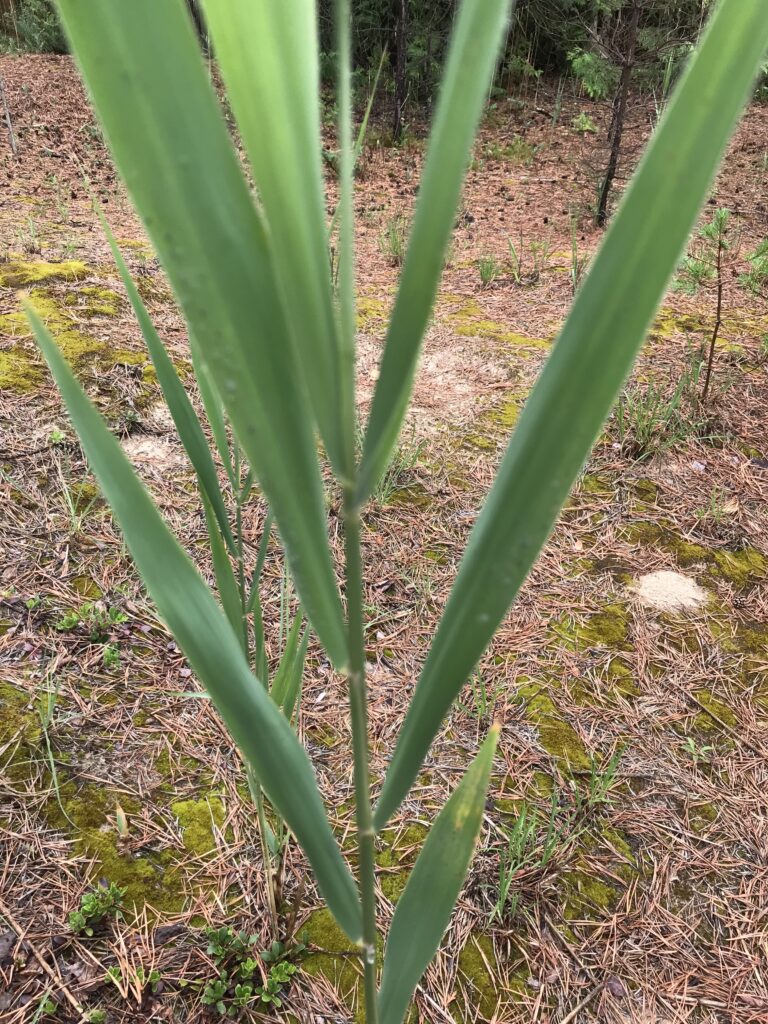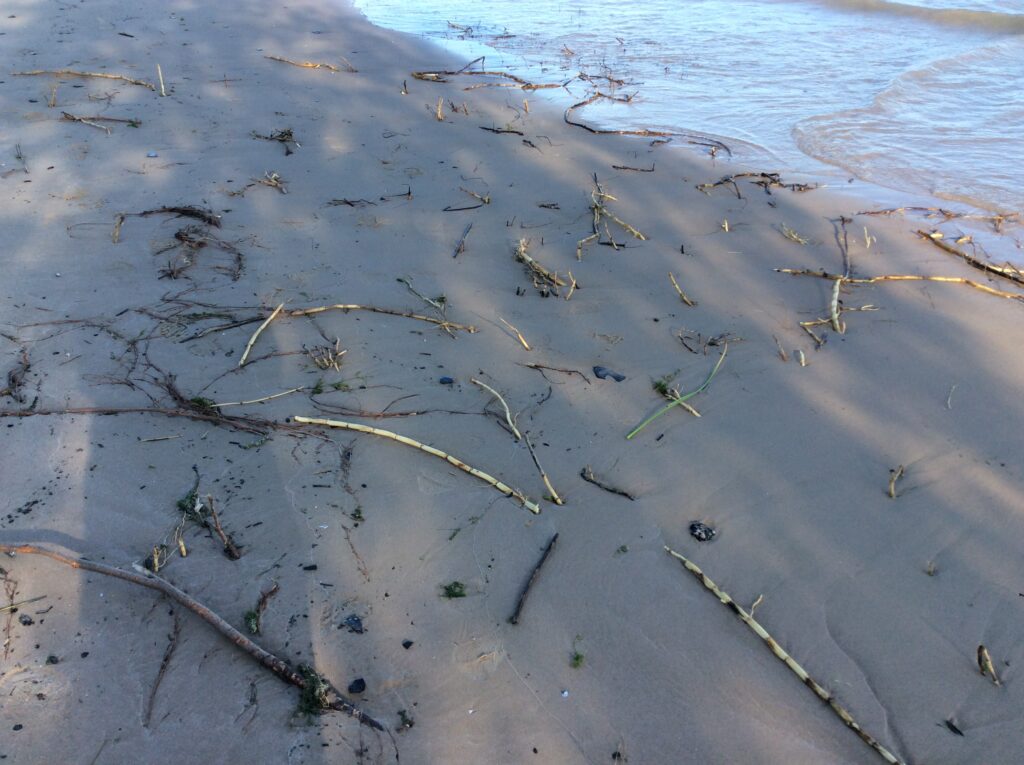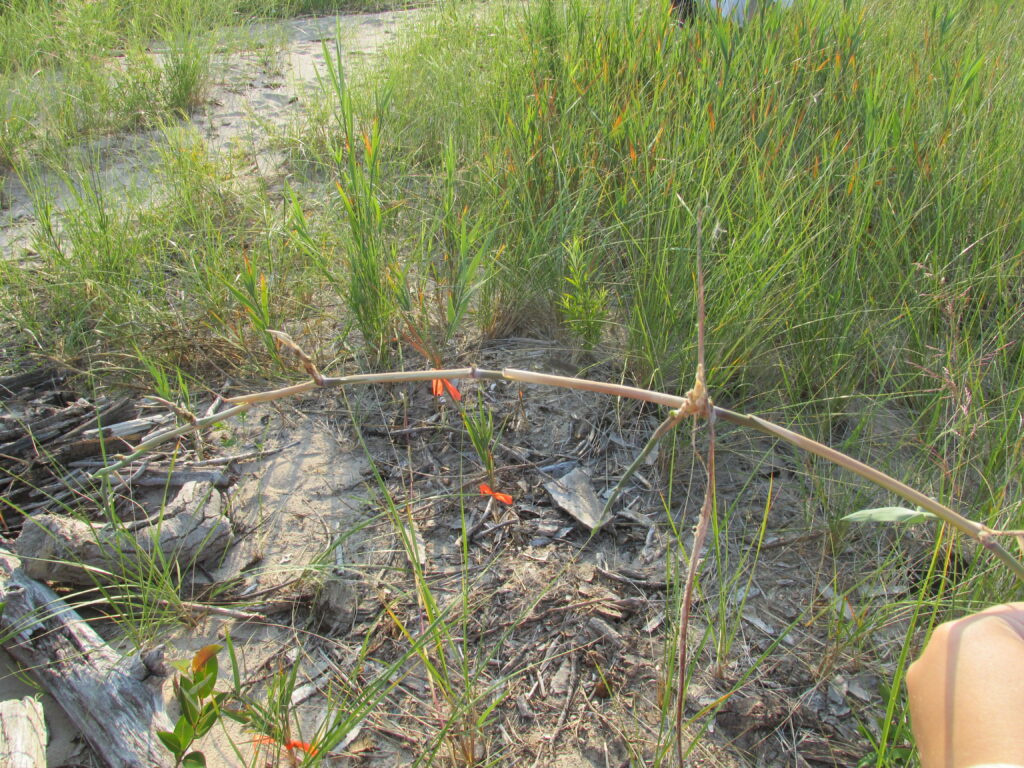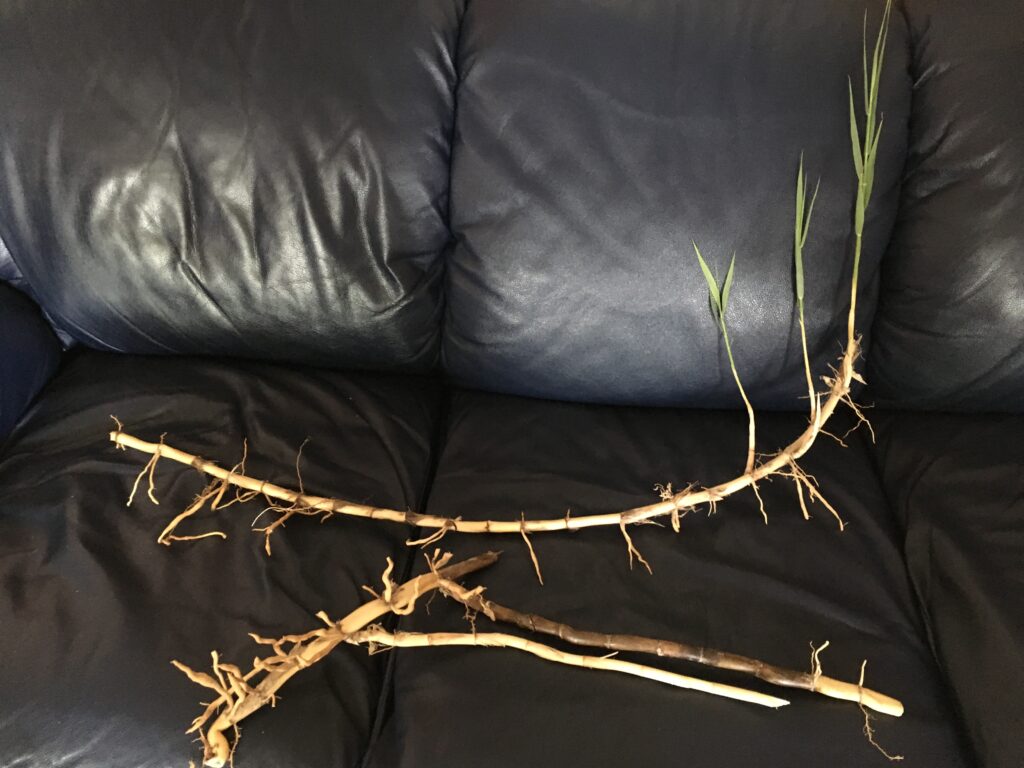Invasive Phragmites is native to Eurasia. It has been present in North America for at least 300 years, probably introduced accidentally in ballast material in the Maritimes. In 1916 it was observed along the St. Lawrence River in Ontario. In 1948 it was found at Walpole Island, in Lake St. Clair. Rapid spread of Phragmites in the 20th century was probably related to construction of railroads and major roadways, habitat disturbance, shoreline development and pollution. This robust grass is now established in most Lake Erie and Lake Huron wetlands and is becoming increasingly prevalent in Lake Superior coastal habitats. It was not until 2005 that Agriculture and Agri-food Canada identified Phragmites as the nation’s “worst” invasive plant.
Seeds
- up to 2000 seeds per head
- can be dispersed up to 10 kilometres by the wind
- also spread by water, wildlife, heavy equipment and unknowingly by people using it for ornamental purposes
Rhizomes and Stolons
- once established spreads predominantly underground via rhizomes; dense clones-200 stems per square metre; rhizomes observed at 10metre depths
- also spread along the ground surface via stolons; observed at 10 metres in length, with new plants every 30 centimetres
- fragments of rhizomes and stolon that break off and are transported to other areas along the shoreline, and down waterways can regrow
Phragmites is known for its exponential growth in colony size and its ability to establish quickly in disturbed sites.
- Phragmites is damaging Ontario’s biodiversity, wetlands and beaches.
- Phragmites crowds out native vegetation resulting in decreased native plant biodiversity.
- Phragmites provides poor habitat and negatively impacts food supplies for wildlife, including several Species at Risk (For example, turtles have become trapped in thick Phragmites and have died).
- Phragmites grows very quickly thereby causing lower water levels as water is transpired faster than it would be with native vegetation.
- Phragmites is a fire hazard. Stands are composed of a high percentage of highly flammable dead stalks. In places where Phragmites is prevalent there are often reported cases of fires causing damage to homes and properties.
- Phragmites can affect agriculture, cause road safety hazards from blocked intersections and impact recreational activities such as swimming, boating, hiking, birding and angling. Many lake front cottages and campgrounds have lost their beaches resulting in decreased property values. Recreational beaches can become inaccessible due to thick, high stands of Phragmites growing along the shoreline. When dried stalks break off, the short stalks become sharp spikes making the area hazardous to walk through without adequate foot protection.
Spading underground roots has been effective in coastal dunes and at the sediment level in wet sites where Phragmites is sparse. Refer to http://opwg.ca/best-management-practices-factsheets/ for visual instructions on spading.
Please note there may be a cost to you for this service.
Only trained professionals should burn standing Phragmites as the dried stalks are highly flammable.
More information about Phragmites
Negative effects of Phragmites






